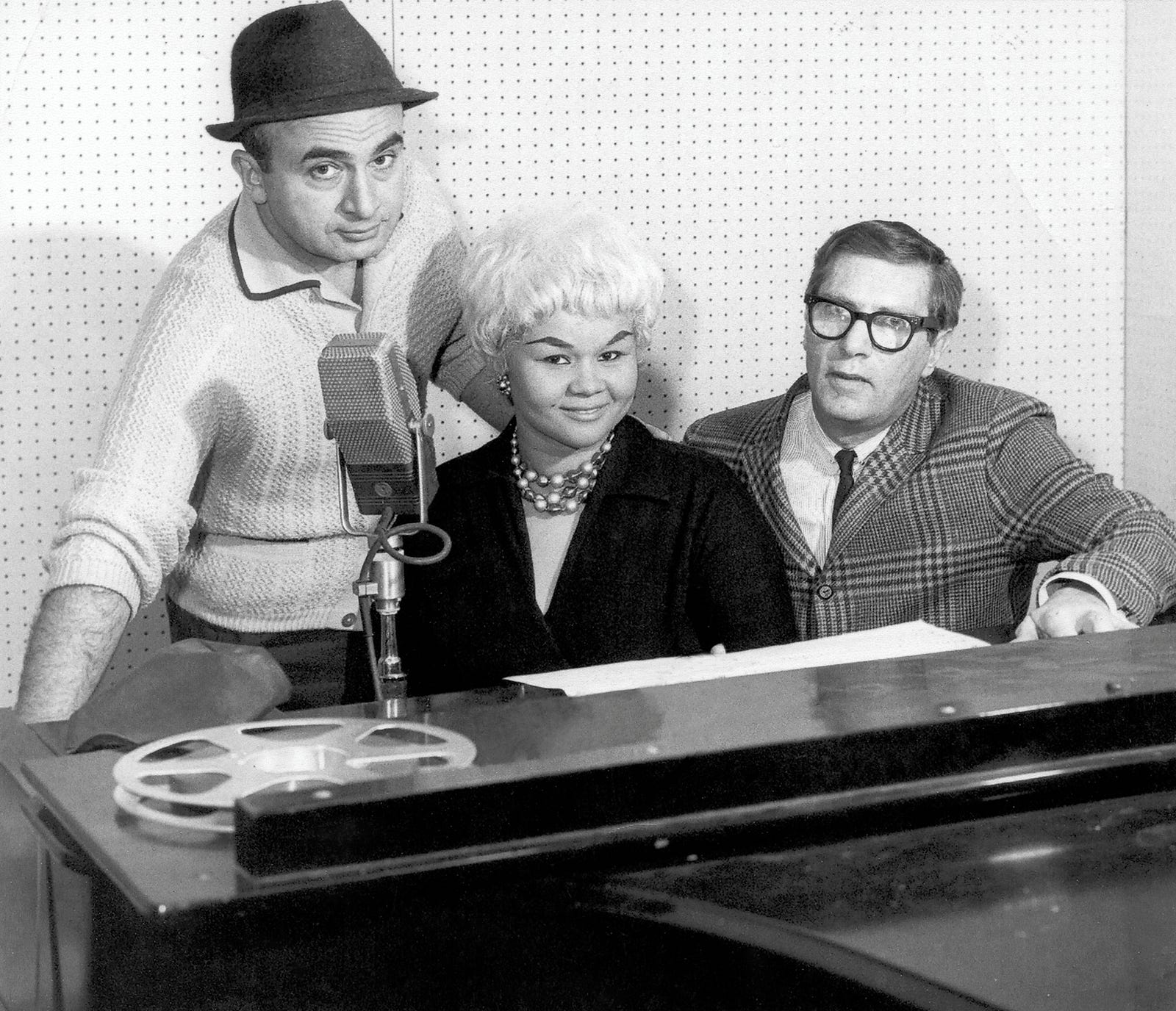Roxanne Shanté (Lolita Gooden) in New York in 1998 (Michael Ochs archives/Getty)
Without response records, there would be no Jay Z v Nas, Biggie v Tupac, Nicki v Remy, or Roxanne Shanté v The World
In1984, 14 year-old Roxanne Shanté (also known as Lolita Shanté Gooden) was walking around the grounds of the Queensbridge Projects in Queens, New York City when she overheard a discussion between three men: her neighbor and producer Marley Marl, producer Tyrone Williams, and deejay Mr. Magic. A hip hop group called U.T.F.O. had canceled a Christmas show in Harlem promoted by Mr. Magic. The men were upset and attempting to hatch a plan to exact their revenge. Shanté, a competitive battle rapper, suggested they record her dissing the group, but she was shooed away by Williams. Undaunted, she continued to pressure the men, and eventually they gave in. The following day, she freestyled over U.T.F.O.’s hit “Roxanne, Roxanne.” As a reward, she was given a pair of jeans from the brand Sergio Valente. Shanté continued with her life and didn’t pay much mind to the four-minute feature.
What she didn’t anticipate was that the song, originally titled “Roxanne Speaks Out,” would become the monster hit “Roxanne’s Revenge.” The teenager made history as hip hop’s first female star and and paved the way for women rappers to forge their own way in a genre dominated by men. The Salt-N-Pepas, Queen Latifahs, MC Lytes, Missy Elliots, Foxy Browns, Lil’ Kims, Nicki Minajs, Azealia Banks’s, and Cardi Bs of the world owe a debt to that audacious teenage voice that leapt off that record and set the tempo for future rap beefs. “Roxanne’s Revenge” also marked an important time for women in the music industry. Not only did it spur the “Roxanne Wars,” in which an estimated 100 songs were made as a clapback to the original clapback, but it saw the revival of “response records” as an art form worth exploring again.
A response record, or an answer song, is similar to what would now be called a diss track. The songs are normally rebuttals to popular songs and tend to be playful and lighthearted. Unlike diss records, which are underscored by a desire to undermine and destroy the opposition, a response record pays homage to the artist by creating a distinct and humorous reply to the original song.
Two of the earliest response records were the songs, “I Wonder Why Bill Bailey Don’t Come Home” and “He Done Me Wrong (The Death of Bill Bailey),” performed by ragtime singer Arthur Collins in 1903 for the musical Frankie & Johnny in 1904. The original song was the classic ragtime tune “(Won’t You Come Home) Bill Bailey,” published by Hughie Cannon and also performed by Collins. Cannon’s record is about a wife who spends her days chastising her husband for his late-night shenanigans — and was apparently based on Cannon’s marriage. In the song, the wife is heard pleading with Billy Bailey to come home at a reasonable time. Cannon, known to be a prolific drinker, died of cirrhosis at 35.
“I Wonder Why Bill Bailey Don’t Come Home” and “He Done Me Wrong (The Death of Bill Bailey)” were response records that were also known as “coon songs.” This form of blackface and minstrelsy, popular from the 1880s to 1920s, were mostly performed by white artists, and emulated and exaggerated what was thought to be black American speech patterns using the ragtime style of singing. The start of the post-war Jazz Age in the 1920s saw the popularity of response records wane as jazz superseded ragtime as the most popular music genre in America. But the emergence of other genres, like country, rhythm and blues, and doo wop, gave artists the space to include response records in their repertoire.
Moving on from where Arthur Collins left off, the rhythm and blues group Billy Ward and his Dominoes released the song “Sixty Minute Man” in 1951. The song, laden with innuendo and details of a man called Dan’s sexual prowess, was one of the first rhythm and blues songs to enjoy success on the pop charts back when music, much like everything else in America, was deeply segregated. For a “race record” with explicit content to chart well was considered an anomaly. In a country that was beginning to experience the cultural sterility of McCarthyism, “Sixty Minute Man” managed to remain on the charts in spite of all the odds:
Sixty-minute man
They call me Lovin’ Dan
I rock ’em, roll ’em all night long
I’m a sixty-minute man
There’ll be 15 minutes of kissing
Then you’ll holler “please don’t stop” (don’t stop)
There’ll be 15 minutes of teasing
And 15 minutes of squeezing
And 15 minutes of blowing my top
“Sixty Minute Man” is believed to have helped set the foundation for rock ‘n roll, a genre with roots in blues, gospel, and country. To ride off of the success of “Sixty Minute Man,” the group released “Can’t Do Sixty No More,” in which the self-assured man called Dan caves into pressure and admits his skills aren’t what they used to be—because he’d overindulged, for want of a better term. The lyrics reveals Dan’s spectacular fall from grace:
Sixty-minute man
Look here girls my name is Dan
As I told you once before
Please excuse my blown out fuse
because I can’t do sixty no more
I used to rock ’em all night long
Now they say that I’m a bore
Now I guess I’ll take a rest
because I can’t do sixty no more
I tried my love with Lucy
I messed around with Mary Jane
Well, when I got through with Suzy
I was walking with a cane
Response records also became a way for artists to latch onto the success of another artist’s hit while showing off their own ability. In 1954, Hank Ballard & the Midnighters released their hit, “Work With Me, Annie,” which, like “Sixty Minute Man,” contained suggestive lyrics glorifying male sexual desire about a man pushing a shy woman to open herself up to him. The song was considered so lewd that the Federal Communications Commission (FCC) banned it from radio stations. By the time they acted, it was too late. “Work With Me, Annie” was popular both on the rhythm and blues chart as well as the pop chart.
In response to Ballard’s song, the blues singer Etta James released “The Wallflower” in 1955, in which she adopted the identity of the coy woman described in “Work With Me, Annie.” James, who was beginning to establish herself as a force at the blues record company Chess Records, pushed against Ballard’s confident male protagonist, dubbed Henry, whom she instructed to “roll with her.” The track was initially titled “Roll With Me, Henry,” but the title was changed to achieve more success on the pop charts. As a woman, James was able to assert her sexuality and counter sexist ideas that center on male pleasure and belittle women’s agency as sexual beings. That she did this at a time when black women’s sexuality was subject to both hypersexualization and erasure, shows how response records could be used to challenge oppression through irony and wit.

While response songs didn’t quite experience the success of their predecessors, they provided artists with a way to bypass rules and regulations on freedom of speech and expression at a culturally conservative time. Some honorable mentions from the response record archives include Geraldine “Dodie” Stevens’ 1961 song, “Yes I’m Lonesome Tonight,” which replied to Elvis Presley’s “Are You Lonesome Tonight.” In 1965, Anna King told James Brown and the Famous Flames that “Mama’s Got A Bag of Her Own”—in case they assumed that only “Papa [Had] A Brand New Bag.” One of rock ‘n roll’s pioneers, Chuck Berry, wrote and sang “My Ding-a-Ling” in 1972, to which Miss Chuckle Cherry responded with “My Pussycat.”
From these titles, it’s clear that important figures within music were using response records to challenge the limits of where they could go lyrically, and adding to the development of genres that were distinctly American. It’s fitting that the response record, a form that bridged the dark ages of blackface and minstrelsy and the eclecticism of rhythm and blues and rock ‘n roll, was resuscitated by a genre that revolutionized popular music. In the tradition of black American innovation, hip hop took the response record and turned it into an art form of its own.









